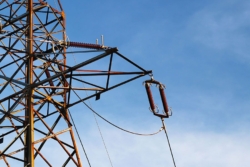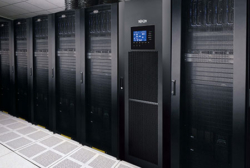In the past few years, innovation emerged that caught the attention of all those interested in the world of industry and engineering in general. This innovation is related to the technology behind the variable speed drives by Schneider Electric Altivar. This technology is playing a major role in changing the direction of the pump world. In this article, we will let you know more about the Schneider Altivar technology.
This unique way of thinking links both mechanical and electrical elements through using the real-time system and observing the equipment status. Iy let the user enhance the procedure optimization by allowing them to control several things such as how much to consume energy and let the process efficiency reach its best and other advantages including lowering the operation costs and increasing the life cycle.
Yes, we have many speed drive technologies, but Schneider’s Altivar is the top among those which provide embedded intelligent services. Such digital services have a power measurement and energy dashboard, pump curves, a start and stop task, asset observation and securing, incorporation with embedded Ethernet, and easy repair.
Built for process applications from 0.75 kW – 1.5 MW, real-time asset performance information immediately determines efficiency drifts and reacts before it affects the bottom line.
Based on the Schneider Electric experts, some of the resulting benefits are:
- Reducing the downtime by approximately 20%
- The ability to save 8% compared to similar drives
- The ability to save energy by approximability 50% compared to a direct on line (DOL) motor starter
A user will also realize a better energy efficiency via the use of the Altivar power measurement option that offers information on energy consumption and even power drifts. A customizable alarm system alerts the user when their power quality fails, helping prevent any penalties.
System and equipment status observing let a user decrease the entire cost of ownership by anticipating system shutdowns. Downtime is decreased and events are followed throughout the full life cycle. This type of repair technology also leads to safer onsite conditions as well as a reduction in work and maintenance costs.
The spokesman of Schneider Electric in a press release once mentioned: “This is increasingly important as utilities are facing pressure to support the integration of a growing number of distributed energy resources such as wind and solar power generation and electric vehicles.” They continued: “ADMS now provides enhanced planning capabilities that enable utilities to optimize capital expenditures in the reinforcement and automation of distribution networks. “
A brief history of Schneider Electric
Here is some information from SE’s official website, showing several stages in the company’s history.
- 1836: Brothers Schneider acquire mines and forges at Le Creusot, France. Two years later they created Schneider & Cie.
- 1891: Having become an armaments specialist, the company launches itself into the emerging electricity market.
- 1919: The company expands into Germany and Eastern Europe via the European Industrial and Financial Union (EIFU).
- 1949: In-depth restructuring led by Charles Schneider takes place after World War II.
- 1975: The Schneider Group acquires an interest in Merlin Gerin, one of the leaders in electrical distribution equipment.
- 1981-1997: The company divests from steel and shipbuilding and focuses mainly on electricity through strategic acquisitions.
- 1999: The Group develops Installation, Systems, and Control with the acquisition of Lexel and adopts its current name.
- 2000-2009: Period of organic growth and acquisitions in new market segments: UPS, movement control, building automation, and security.
- 2010-Present: Schneider Electric further reinforces its position in software, critical power, and smart grid applications.
If you are interested in knowing additional information about this topic, visit the MRO Electric website.






